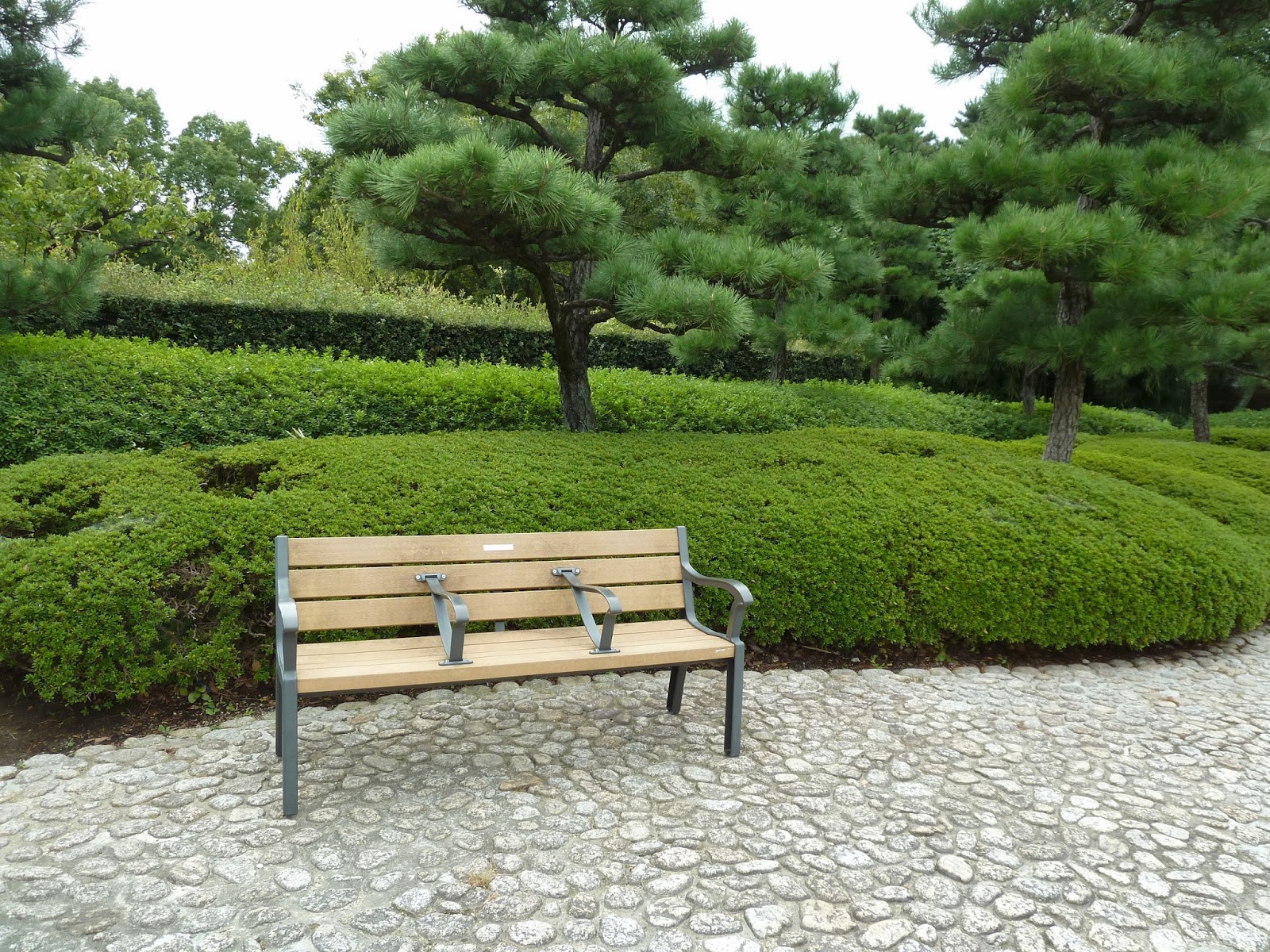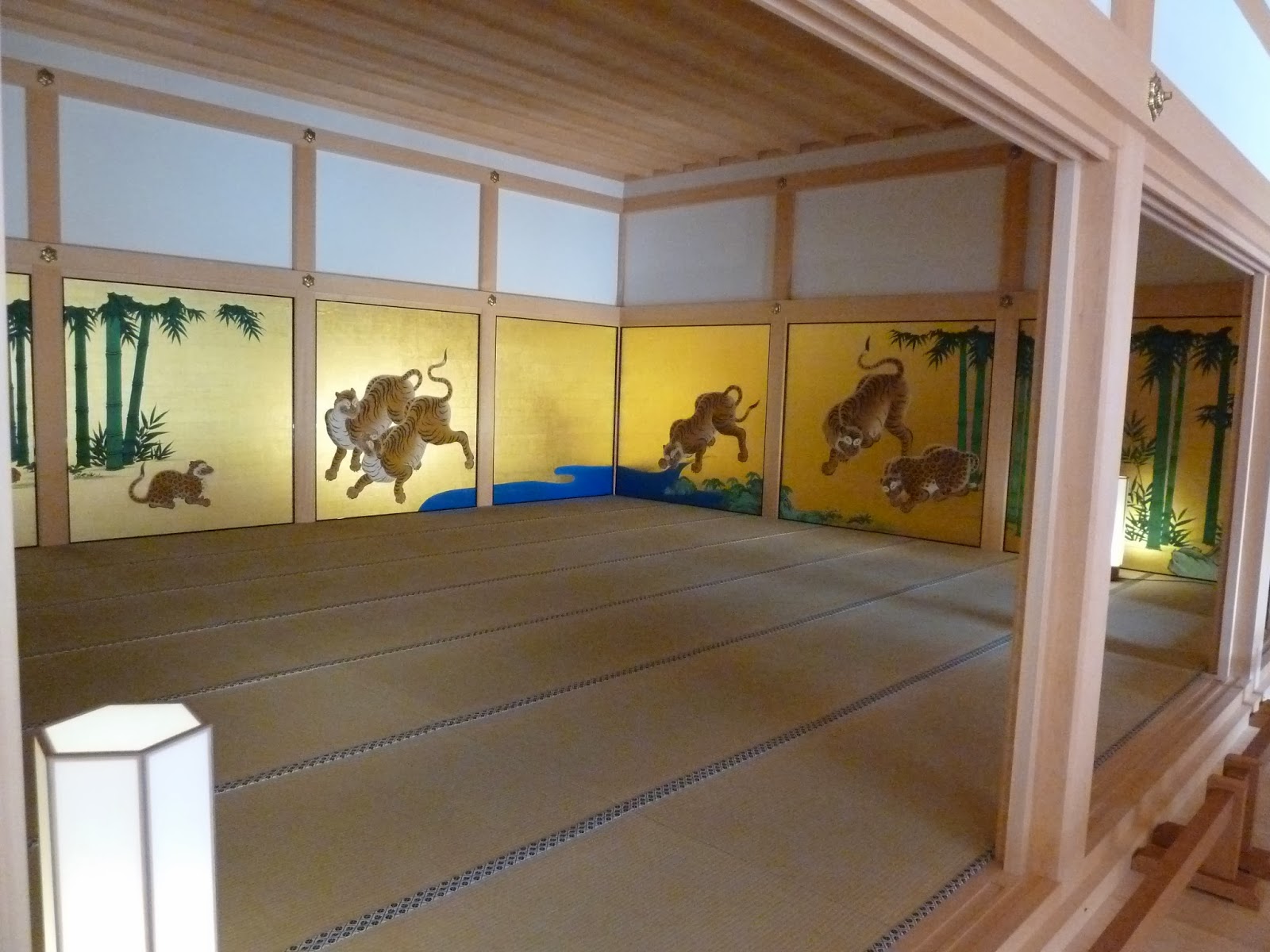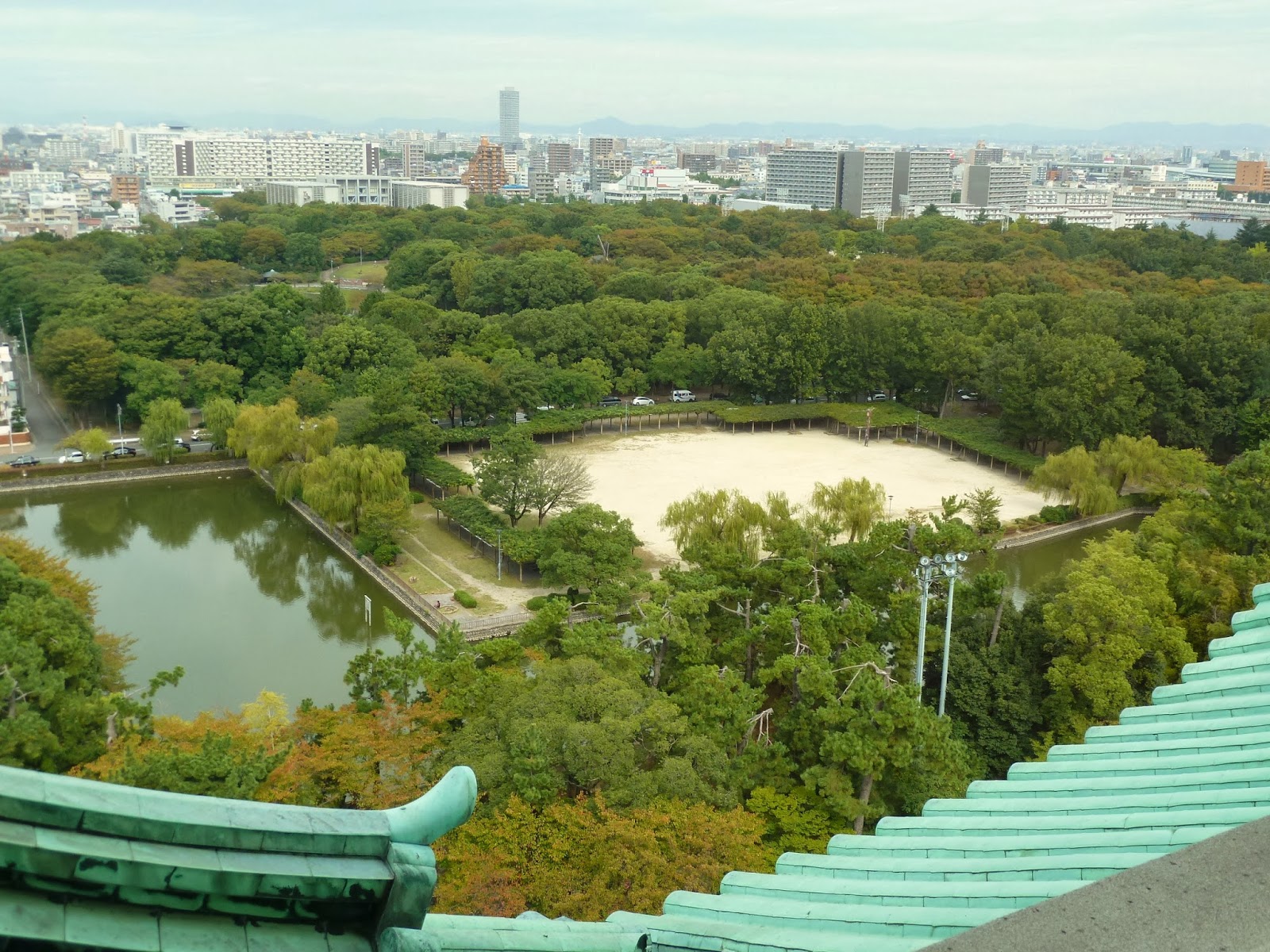"Perhaps travel cannot prevent bigotry, but by demonstrating that all peoples
cry, laugh, eat, worry, and die, it can introduce the idea
that if we try and understand each other, we may even become friends."
~Maya Angelou
On Friday October 18th, we had the day *free* until around 3pm when we gathered and boarded our bus to the airport. Our first real time to sight see, a large group of us took the subway to the Nagoya Castle grounds.
Traveling helps me realize that I'm really not that different from many people around the world, as evidenced below by their clear love for The Sound of Music, as well.
As we walked in through the first gate, you could see the moat-like area that surrounded the inner walls. There were little booths set up along the path, as we were entering and I got my picture taken with two girls dressed in traditional attire. I couldn't tell if they belonged to one of the booths or if they were just walking around, but I stopped them anyway, so I could get a snapshot.
The grounds were beautiful and meticulously manicured, as you might expect any Japanese garden to be. And take a look at the bench below. Perfect type of bench for a public place because three people can comfortably sit together with the barriers between them. I feel like people, myself included, are uncomfortable if a public bench has more than two people on it. I feel like I'm too close to the people next to me, invading their personal space and having mine invaded as well. Too close for comfort. But somehow the arms in the middle of this bench would alleviate that discomfort.
The Nagoya Castle was first built in 1612, then restored in 1868. It became the first castle to be designated a national treasure in 1930, along with the Hommaru Palace which was originally built in 1615. Sadly, in May 1945, during WWII air raids on Nagoya, the main castle tower and many of the buildings including the Hommaru Palace were burned down and destroyed. The castle had served as the symbol of Nagoya for centuries, so the people rallied for the main castle to be rebuilt, which happened in 1959. Below is a picture of what the Castle and the Palace looked like before they were destroyed.
In the photo below is the southeast corner tower, one of the three corner towers that survived the fire. This one was used at one time to house weapons and also apparently has trap door from which large stones were dropped on enemies.
Efforts to rebuild the Hommaru Palace began in 2009. The entrance hall and main hall opened to the public just last May, five months before we visited. Still under construction in three phases, completion of the entire palace is expected for some time in 2018. Luckily, most of the paintings on the sliding doors of the original palace survived the fire and I believe they are being restored and installed in the palace as construction continues. 1,047 of these paintings have been designated by Japan as Important Cultural Assets.
The entrance, which is pictured below (along we me, Tara, and Jane) is called the Genkan. I think that means entrance or entrance hall in Japanese. It's made with a shingled roof consisting of thin slats of wood thickly stacked on top of each other. The black lacquered gable is adorned with metal fittings.
The beautiful light-colored wood inside is primarily hinoki cypress, I found out when I researched it after returning home.


The picture above on the left I think is a wall of names of those who have donated to the restoration project. I *think*, but of course I'm really not sure. And if you can't see in the one of the hallway above, the little sign says, "Mind your head."
After changing back out of our Japanese slippers, which were required footwear while walking through the palace, and into our street shoes, we made our way over to the Castle and each of its eight levels, except for the special exhibit level 2, which we hadn't paid to see.
Of course, as is with any place that attracts tourists, there was a gift shop up on the observation deck level.
We were running out of time to get back to our designated group meeting spot, so we took the stairs all the way down. I felt like I was in a cage the whole time.
One thing I love about traveling, is observing how little old ladies are so similar no matter where in the world you are. Also make note that the benches they are sitting on do now have armrests in the middle. These ladies must be friends.
You may have noticed the golden fish looking statues on either side of the top of the main castle tower.
These are golden dolphins, kinshachi, imaginary animals that are said to be able to summon water and have come to be used as charms for preventing fire, which I think is rather sad seeing as the originals were destroyed in the fire from the wartime air raids. Nevertheless, we couldn't resist taking pictures on the life-size replicas. Don't worry, it was allowed. Encouraged, even.
Each is roughly 8.5 feet (2.6 meters) high and weighs 2700 pounds. The real ones are covered with nearly 6 inch-thick 18-carat gold. And apparently, the gold alone from one of these creatures weighs about 97 pounds. Pretty extravagant!
Still rushed for time, I ran over to the area where they were having a large bonsai tree exhibit. My guess is there were a least a couple hundred trees.
After leave the castle grounds, we got back on the subway and headed to the Osu Kannon Temple. I'm going to save that for Part Two, coming right up. I know this is a bit of a picture overload, but it will serve as a great memory for me.
.
.
.
.









































































1 comment:
Oh, I love Nagoya. :)
Genkan: entrance. As in, the place where you stop and take your shoes off before entering a building (home, temple, shrine, etc.).
(Jess doesn't have a literal English word translation, but that's the right idea. :) )
Post a Comment